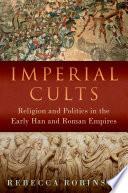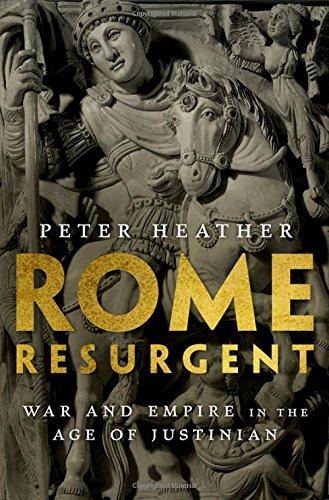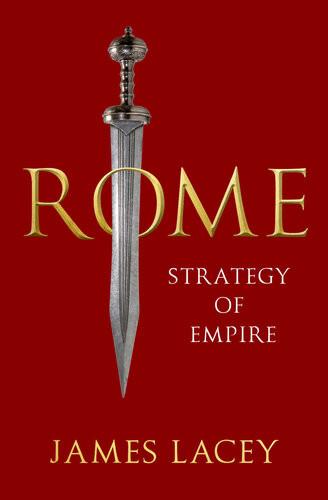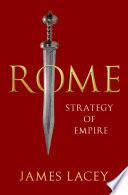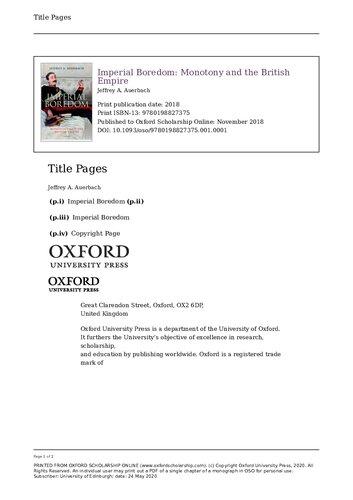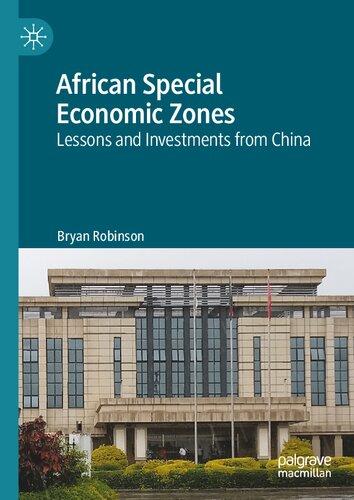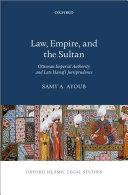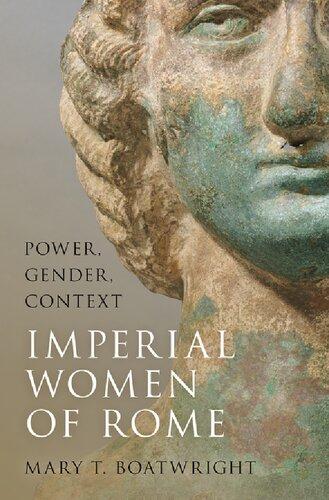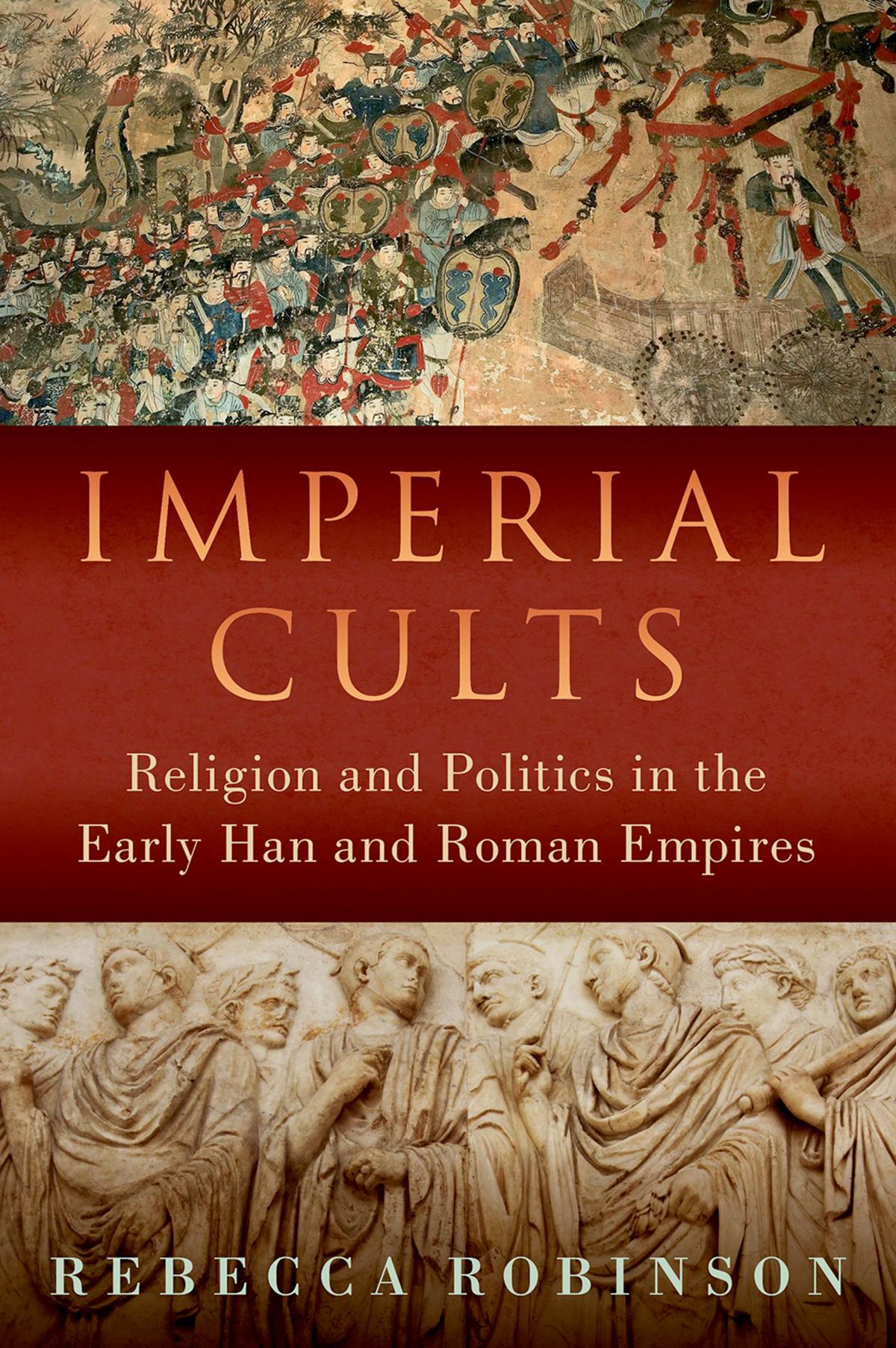Comparative Ancient History
In recent years, there has been a growing interest in the study of the ancient world from a comparative perspective. The reasons for this are manifold, but stem in part from a desire to broaden the field of the study of the ancient world due to China’s emergence as a world power in the twentieth century,4 and its subsequent popularity as a field of study. It seems natural, therefore, to compare the civilizations of the east and west to which our intellectual, political, and cultural legacies are most indebted. And indeed, this is where studies of comparative history have been focused: beginning with Geoffrey Lloyd’s pioneering work on Greek and Chinese science, historians have compared various elements of ancient Greek and Chinese societies, including art and aesthetics, historiography, philosophy, divination, ethnicity, and literary traditions.5 These studies aim to understand the differences between the development of science, philosophy, literature, and rhetoric in the two societies, while simultaneously exploring comparison itself: “to find a way of gaining from the joint study of two cultures understandings about each that would be unattainable if they were studied alone.”6 These works take as their starting point the fact that there are fundamental similarities between early China and ancient Greece; according to Geoffrey Lloyd and Nathan Sivin, both societies evolved “comparatively elaborate cultures, with languages and abstract conceptual structures that could be used to explore every aspect of individual and collective experience.”7 People in both societies also saw the need to inquire into the nature of the cosmos, the human body, or plants, animals, and the environment, and believed that the study of these diverse natural phenomena was essential to understanding man’s place within the universe.8 These studies of scientific inquiry, philosophy, literature, and rhetoric discuss the ways in which thinkers in each society understood and
theorized their world, and how these inquiries and understandings were shaped by their cultural traditions. Scholarly interest in comparison has heretofore been primarily focused on the Sino-Greek comparison, with recent monographs on gender relations, divination, and ethnicity published in the last several years.9 However, there has recently been an “imperial turn” in comparative work, turning to the study of empire and statecraft in Rome and China.
Moving away from the intellectual history orientation of the SinoGreek studies, volumes comparing Rome and China have focused on questions related to empire, including comparisons of bureaucracy, monetary systems, trade, imperial courts, law, urban spaces, and gift circulation.10 In so doing, these studies turn to the day-to-day operations of the empires, drawing conclusions about structural similarities and differences. Studies comparing the Roman and early Chinese empires seek to address questions related to state formation and longevity—why, for example, did the Roman empire endure, while the Han did not? Jane Burbank and Frederick Cooper’s book on the persistence of empire as a form of political organization begins with a chapter comparing empire formation in Rome and China, setting the stage for the development of later historical empires. These comparative volumes, along with academic conferences and workshops, have demonstrated the usefulness of comparison in understanding the development of ancient societies, and have encouraged scholars to reconsider basic assumptions about their field through confrontation with the other. ImperialCults contributes to this growing body of scholarship by examining the role of religious institutions and practices in the development of empire.
While comparative studies can attempt to answer large questions about human behaviour, civilization and state-formation, and cultural change,11 the comparison of similarities and differences between civilizations also provides a new perspective on familiar material, and the comparative model can help scholars break out of the strictures imposed by centuries of historiographical traditions. As Walter Scheidel has put it, “comparison defamiliarizes the deceptively
familiar,”12 forcing historians to confront their sources with new questions and identifying important lacunae in the ancient records, as well as in more recent scholarship. The comparative project thus has two related goals: first, to seek to uncover similar processes in human behaviour under similar conditions from beneath the culturally specific characteristics and modes of knowledge and action. Second, to destabilize what we already know of these ancient civilizations, from both the ancient sources and the subsequent historical traditions that each field has engendered, by bringing the two civilizations into conversation. Comparative history is most useful insofar as it permits us to formulate new understandings of these civilizations, rather than to reinforce established understandings.
Following Walter Scheidel (2009; 2015) this monograph investigates what Jack Goldstone has termed “robust processes.” A robust process is a causal explanation of events, given similar initial conditions, “a sequence of events that has unfolded in similar (but neither identical nor fully predictable) fashion in a variety of different historical contexts.”13 Goldstone, in his comparative study of the English and French revolutions with the Ottoman Crisis and the Ming-Qing transition, argues that big events, such as state breakdown, can be explained in part due to fundamental orientations in human behaviour, “knowing that, in a given situation, most people will react in some consistent fashion.”14 The focus on processes, rather than attempting to identify identical or universal structures in the ancient world, allows for more flexibility in comparison. It allows the historian to navigate the space between the overly general and the culturally specific. By seeking to understand the processes through which the early rulers consolidated their authority, the differences between the culturally specific characteristics of religious institutions become less important than the ways in which the rulers navigated them. We shall see that the strategies employed by the early rulers in transforming their respective religious institutions have many parallels, as the rulers adapted to challenges, and sought outside knowledge. The goal is
not to create historical law, but rather to understand the parallels; thus,
a robust process is less than a law but more than a limited historical generalization or analogy. It is a causal statement, asserting that a particular kind of historical sequence unfolds because individuals responded to particular, specified, salient characteristics in their respective historical situations.15
While Goldstone is interested in responses to crises, here I am interested in innovation, exploring the parallel developments in laying foundations of empires. Beginning with the initial observation that the rulers of the Han and Rome made dramatic changes to their religious institutions and used spectacular ceremonies to cement their rule, here we will examine how these changes took place, and to what conditions they responded. It matters little that the cult practices of the early rulers were dramatically different; the processes through which they were transformed are remarkably similar. This first goal of the comparative project is closely related to the second, and a thorough illumination of these parallel processes is only possible through a willingness to reinterpret established interpretations of historical events.
The second goal of comparative history is thus to destabilize what we know and think of the ancient world, particularly with regard to our sources and how they present their civilizations. The historical and archaeological records from early China and Rome differ dramatically in terms of both content and quantity. The written records from the Qin, Han, and Rome contain such different content that it quickly becomes obvious that the authors and archivists of these records—historians, religious specialists, statesmen, and others—of each civilization were concerned with radically different questions. The biases of these sources, have, understandably, influenced their respective historical traditions, and the two traditions diverge substantially in terms of the topics they have pursued. Rather than being an obstacle, this incongruity can be seen as an opportunity: by interrogating the Roman sources with questions asked by the Han scholars and the major discussions in
the field of early Chinese history, we gain a different perspective on the ways in which the Romans wrote about their history, and how these sources have subsequently been written about. At the same time, reading the early Chinese sources through the eyes of a Romanist generates a wide range of questions about early Chinese culture and statecraft. To make a very broad generalization, we can say that the sources from ancient Rome tend to focus on military affairs, debates within the Senate, the opinions and actions of “big men,” including writings on philosophy and legal affairs, while the sources from early China trend towards questions about cosmology, good governance, and biographies of exemplary (or infamous) individuals and groups. In addition to the received literary and historical documents, we also have a wide range of excavated documents from early China, which give new insight into legal procedures and everyday life. While battle narratives, lauding the military achievements of generals, dominate the historical records of Rome, we have few such narratives from early China.16 Discussions of correlative cosmology abound in the early Chinese sources, but are scant in Rome.17 This is not to say that battle narratives were not told in early China, or that the Romans did not speculate about the nature of the cosmos, but simply that the authors of the historical texts that have become the dominant sources in each tradition, were not, respectively, as concerned with these questions. The Chinese histories were written about officials, “for officials by officials,”18 and we can likewise perhaps say that the Roman sources were written “about nobiles, for nobiles, by nobiles.” While it is, of course, impossible to read sources that do not exist, we can read between the lines, and try to understand these ancient sources on terms other than their own.
This type of comparison, however, raises several issues, most notably that of cultural specificity. It bears remembering that our comparisons between the ancient civilizations are not exclusively made between the two ancient civilizations, they are simultaneously a comparison with our own modern concepts of state, culture, and civilization. As Jeremy Tanner has put it, “one cannot take individual
theories, for example the Greek theory of elements (stoicheia) and the Chinese theory of the five phases (wuxing), and compare them as answers to the same (probably modern) question about the ‘nature of reality’.”19 These questions are particularly amplified concerning the question of religion and belief in the ancient world. There is no evidence to suggest that theories about the nature of society and the cosmos had their origins in one ur-civilization and were later adopted and adapted by disparate civilizations. The comparative approach is not a search for universality of belief or understandings of the world; it is an attempt to understand how actors in different civilizations approached similar problems under similar circumstances, and through a comparative analysis, to gain a different understanding of each civilization.
Comparative studies must necessarily operate in the space between broad generalizations and historical specificity. Comparative-historical analysis, according to Matthew Lange, allows the researcher to “balance idiographic and nomothetic explanations,” and “gain knowledge about individual cases while at the same time pushing the envelope to explore whether explanations hold across multiple cases.”20 Individual case studies, when placed in comparison, are thus able to reveal larger processes at work in the formation of empires, while also providing detailed analysis of the individual cases. One of the difficulties in the venture is the balance between generality and specificity. A study that is too broad must ignore, or gloss over, important features of particular cultures and institutions, while a study that is too specific finds little ground on which to compare two societies. We must also resist the temptation to “fill in the gaps” of one society, and its historical record, with the material from another, seemingly comparable society. “There is never enough information,” according to Bruce Trigger, “to explain all aspects of any early civilization, and this lack of information has stimulated many anthropologists to extrapolate what is known about one society to other, presumably similar ones.”21 It is not my intention, through the discussion of the parallel processes in reforms made to religious institutions in early China and Rome, to argue for
any inevitable actions or results or to argue that because something happened in one place it must have also happened in the other; rather, through the juxtaposition of the two cases, I hope to demonstrate that, not only did the rulers make similar use of the opportunity to reform their religious institutions, but that the comparison can lead to different, and more nuanced interpretations of both cases. By using one society to “make visible” elements of the other that may be hidden or occluded in the historical record, comparative history reminds us that histories are the products of their societies, and present only one perspective on events and ideology. What comparative history has to offer, therefore, is not easy answers, but more challenging questions.
While comparative studies often begin with a search for similarities between societies, or for points of convergence on historical trajectories, the historian is, more often than not, confronted with more difference than similarity, more divergence than convergence. Given that the two societies under investigation developed independently from each other, this should come as no surprise. That there are great differences, however, does not jeopardize the comparative study; rather, it allows us to view familiar material in new, unfamiliar light. The comparative approach, rather than seeking to discover similarities in the minutiae of particular institutions, or the actions of individuals, can offer broad, causal explanations, while simultaneously forcing us to rethink and reargue some of the established orthodoxies in each field.
Comparing “Religion” in the Ancient World
The question of what constitutes “religion” in both early China and Rome has long frustrated scholars. While the word “religion” has often functioned as a catch-all term to describe any and all doctrines and practices from the ancient world that attempted to describe or engage with the extrahuman, our assumptions about what constituted religion are still very much reliant on the Abrahamic model. As we shall see in Chapter 3, the practices that we describe
as religious in early China and Rome bear little resemblance to later religious traditions, both in China and the West. Additionally, as Filippo Marsili has recently argued, attempting to understand early Chinese traditions through the lens of Greco-Roman religious traditions only offers up more pitfalls, as we attempt to force Chinese theories and practices into the model of polis or state religion that dominated the ancient Mediterranean.22 While some scholars have argued that ritual and religion are foundational to all societies, it is effectively impossible to come up with a definition of religion that encompasses all manifestations of what we refer to as “religion” in all societies.23 It is not the intention of this monograph to create any such definition, nor to venture into the debate over what constituted religion in either early China and Rome, or both. In Heaven is Empty, Marsili convincingly argues for the need to understand early Chinese attitudes towards the extrahuman outside of Abrahamic models, as well as the need to be more cautious in comparisons with early Roman religions, the study of which has also long been influenced by Abrahamic religions and scholarly traditions.24
In particular, Marsili argues that one of the dangers of applying the Abrahamic or ancient Roman model to early Chinese religions is that it makes us assume that there was an “integrated, coherent system” for conceptualizing nonhuman phenomena.25 As we shall see, there was not one approach to the extrahuman in early China, and the practices that we characterize as religious were subject to much experimentation. The early Chinese had, according to Kenneth Brashier, “many of the components that we may consider ‘religious’—spirits, prayers, sacrifices, afterlife, and so forth—but they simply did not draw a circle around those components and then label the circle as we do.”26 Likewise, the ancient Romans had many of these components, and, unlike the Chinese of this period, an organized state religion, complete with clergy.27 However, while the two share certain characteristics and components, the religious institutions of the Han and Rome remain specific to each society, and very different to later religions.
This monograph is thus not concerned with comparing the religions or religious characteristics of early China and Rome.28 It is not concerned with the question of sacrality or secularity, of orthodoxy and orthopraxy, or even with the question of belief. Such questions are left to scholars of religion to debate.29 Instead, this monograph is interested in comparing the ways in which rulers used their respective religious institutions to bolster their own authority. As we shall see, this involved the creation or adoption of new cults, the introduction of new men into positions of religious authority, and the use of religious ceremonies as communicative media. By focusing on the rulers’ use of religious practices and institutions, we can compare the ways in which early rulers used their respective modes of engaging with the extrahuman to facilitate their claims to sole imperial authority. In so doing, rather than advancing any definition of religion as a cultural universal, Imperial Cults seeks to show that “religions,” as culturally specific traditions, were manipulated by rulers for power; this practice being perhaps more of a cultural universal than religion itself. As such, this monograph is more about politics than religion, though at the same time it contends that neither society could have a politics without religion.
Sources
Our understandings of these religious institutions and practices have, of course, been shaped not only by contemporary religious traditions and scholarship, but by our sources for religions in the ancient world. Both cultures had a rich literary tradition, and writings about the state and society flourished in both empires. These sources were, largely, written by elites, themselves often members of court society or state bureaucracy. As such, the literary records are closely linked to the sociopolitical circumstances of the time, and in some cases, contributed to narratives of legitimacy.
Much ink has been spilled about written historical traditions in the ancient world and the goals and motivations of the historians. It is not my intention here to enter into this debate, but to highlight
some of the salient features of the early Chinese and Roman historical traditions, as well as to draw attention to the areas where they resemble each other. Two generalizations may be made about the early Chinese and Roman histories, one more sweeping than the other. The first is that their authors, none of them professional historians, sought to investigate and reconstruct the pasts of their societies, in order to understand the present. In the early Han, the Grand Scribe Sima Qian, following precedent set by earlier annalistic works, searched for patterns; understanding those patterns would allow a ruler to rule according to the way of Heaven. In Rome, various Roman historians, including Livy, Polybius, Dio, and Tacitus, looked to the past to explain the rise and fall of the Roman Republic. The historians of the ancient world all attempted to provide a true reconstruction of the past; at the same time, they were explicitly aware of their own interest in present events. From this arises the second generalization: that, for the ancient historians, the writing of history required the historian to invoke his own judgement, whether explicitly or implicitly, freely or cautiously distributing praise and blame for past events. The writing of history was, and still is, a political act.
The topics that interested the historians, however, differed, as do the other sources that survive from the Han and Rome. Roman historians enjoyed sweeping their readers into the heart of battle and the shadows of intrigue, while the Han historians shied away from battles and tiptoed around scandals. Han histories provide detailed theories, calculations, and charts about cosmic patterns, such as calendars, while Roman histories force us to piece together the details of cosmology and calendrics, even though they were important parts of Roman life. Other literary sources likewise differ in their interests: texts from early China provide detailed instructions for, say, how to conduct a capping ceremony, allowing the modern reader to reconstruct said ceremony, should she so desire, while Roman sources allow us to imagine how it might have felt to hear a talented orator argue a legal case. Material culture from both societies greatly augments our understanding of the past, but while the Italian peninsula is seen to have largely revealed her secrets, the
discovery of buried texts and important sites in China continues at a (for ancient historians, anyway) breath-taking pace. In what follows, I will discuss the relevant sources, from China and Rome, employed by this monograph. This is by no means a comprehensive survey of the two traditions, merely a brief guide to some of the relevant literature to facilitate readers who might be unfamiliar with one or the other traditions.
While there had been a long tradition of historical writing in early China, the genre took a particular form during the reign of Emperor Wu; a form which it would largely retain throughout imperial Chinese history. Started by the Grand Scribe (taishi 太史) Sima Tan 司馬談 (d. 110 bce) and completed by his son, Sima Qian, who succeeded him as Grand Scribe, the Shiji was intended to be a history of the entire world, from earliest times to the reign of Emperor Wu, during which it was written. This history, divided into imperial annals (ji 紀), tables (biao 表), treatises (shu 書), hereditary houses (shijia 世家), and biographies (lie zhuan 列傳), set the precedent for subsequent history writing in China.30 Rather than being simply a narrative history, the Shiji encompasses a vast amount of information about various subjects. The imperial annals provide a year-by-year overview of events during each emperor’s reign, including omens and natural disasters, amnesties, imperial decrees, imperial travels, and military campaigns. The tables section includes chronological tables of important events and lineages, in order to clarify the different genealogical lines which existed simultaneously.31 The treatise section contains chapters on diverse topics related to the empire; pertinent to this monograph are the chapters on ritual and sacrifice. The Hereditary Houses section provides information on the Zhou states, and contain a mixture of chronological and biographical information. Finally, the biographies section, the longest part of the text, is a collection of biographies of notable individuals; some notable for their connection to the imperial house, some famous statesmen or thinkers, and others, infamous for their crimes. The work is remembered as Sima Qian’s greatest achievement, and his title Taishi is often translated, misleadingly, as the “grand historian”
as a result of his work.32 However, he was not employed by the court to write history, and this project was not directly related to his duties as Grand Scribe, which involved recording information and monitoring celestial phenomena, among other tasks.33 His position gave him access to imperial archives and he also travelled to historical sites to gather materials and interview local officials, in order to present as comprehensive history as possible.34 For the imperial records of the Western Han, it is reasonable to expect that his writing was based on materials from the imperial archive. The work was not, however, an attempt at purely objective history writing: in many cases it is a critique of the reign of Emperor Wu, out of whose favour Sima Qian had fallen.35 The work was also a very personal project, as Sima Qian was perhaps attempting to position himself as a “second Confucius;” an assertion which in itself was an implicit critique on the legitimacy of the reigning emperor.36 Our second main source for the period, the Hanshu 漢 書 , completed in 111 ce, was written primarily Ban Gu 班固 (32–92 ce), with contributions by his sister Ban Zhao 班昭 (45–ca. 116 ce). This was also a project inherited from their father, Ban Biao 班彪 (3–54 ce). The Hanshulargely follows the model of the Shiji, comprised of imperial annals, chronological tables, treatises (zhi 志 ), and biographies (zhuan 傳 ). The Hereditary Houses section was not included, as it was not pertinent to the Western Han. Unlike the Shiji, the Hanshu was a history of a single dynasty—the Western Han. Written during the early Eastern Han, the Hanshu records the period from the founding of the Han dynasty to the end of the reign of Wang Mang 王莽 (45 bce–23 ce), and his Xin Dynasty 新, in 23 ce. Much of the Hanshurepeats verbatim the text of the Shiji, yet it also builds upon the work of the Simas, not only extending the history to the end of the Wang Mang period, but supplementing many of the details from the reign of Emperor Wu.37 Writing from a later period, the Hanshu provides a very different perspective of the events of Emperor Wu’s reign, and is less interested in critique. This is not to suggest that it is free from its own bias, but that it has the benefit of
historical perspective for this period. The Hanshu treatise that discusses Emperor Wu’s ritual programme is largely based on that of the Shiji, though some modifications have been made. Throughout the monograph, I provide citations to both sources, noting the differences when pertinent.
In addition to these two histories, written during the Han, I make use of other texts from the pre- and early-imperial period, which provide more detailed explanations of ritual practices, or were intended as practical guides, such as the Liji(RitesRecords 禮記),38 LüshiChunqiu (TheSpring and Autumn Annals ofLü Buwei 呂氏春 秋 ), and Huainanzi ( 淮 南 子 ). These texts, particularly the ritual texts, can be tricky to employ in the study of Han institutions, for they were likely prescriptive texts, rather than representative of actual practice, and there is no indication as to what extent they were employed by scholars at court, though we know that they were consulted and in circulation in some form. These texts represent various types of knowledge available to the advisors to the emperor: at times they represent a consensus, and at other times a plurality of opinions on how ritual action should be undertaken.
Conspicuous by their absence in this monograph are the many texts and other documents that have been excavated or otherwise retrieved from tombs, wells, and antiquities markets.39 These documents, primarily written on bamboo slips or wooden boards, offer a wealth of information about the Warring States, Qin, and Han societies that is not included in the historical or other received texts. In particular, the discovery of legal and administrative documents has reshaped our understanding of early Chinese statecraft.40 Numerous documents, most notably those now classified as “daybooks” (rishu 日 書 ) also shed light on popular religious and mantic practices, allowing us a glimpse of how nonelites might have interacted with the cosmic world in their everyday lives.41 Unfortunately for the present study, the excavated or retrieved texts do not, as yet, provide any insights into religious practices at the imperial level. While it is reasonable to suppose that the emperor and his advisors were aware of and even employed some of these
mantic practices, there is no indication that they were a part of Emperor Wu’s religious programme, or that they had any role in shaping his imperial vision. As such, excavated manuscripts will only be mentioned when they shed light on a particular topic or problem, and do not constitute a significant source-base for this study.
The texts whose authorship we can trace for this period were all produced by elite writers, many of them either directly employed by or closely affiliated with a court.42 While this is advantageous in that the historians, in particular, were able to include transcripts of imperial edicts, and had access to a wide variety of source materials, it does also mean that the histories are concerned almost exclusively with elite affairs, and pay scant attention to the common people. A similar situation is evidenced in Rome.
The Roman historical tradition was, like the early Chinese, long and rich. Developing from Roman antecedents, the Roman historians, some of whom were Greek, sought to not only provide detailed accounts of events of the past, but also to emotionally engage their readers. One of the earliest historians of Rome, the Greek Polybius Πολύβιος, argued that the most important type of history was what he termed “pragmatic history”: history focused on the “deeds of people, cities, and rulers.”43 This type of history should be written to educate readers, and it is likely that his intended audience was aspiring politicians.44 Furthermore, he stated that in order to write this type of history, one should be equipped with the necessary skills. Particularly, he suggested that hands-on political experience was necessary for the historian to understand politics and how to evaluate sources.45 While not all of the historians, biographers, or other writers from Rome were themselves politicians, they were all connected to the ruling elite, and thus had not only close connections to the leading political figures of their time, but also the necessary education and access to sources to be able to write. These aims of history—to elucidate the past for the education of future leaders—remained important, and the authors’ distribution of praise and blame reveals how they thought Rome should be run. There are many excellent overviews and detailed studies of Roman
historical writing; as with the Chinese sources, this section will offer some brief comments on the main sources used in this book.46
One of the most influential Roman historians, Livy (Titus Livius, 64 or 59 bce–17 ce), wrote during the transition from Republic to Empire. Like Sima Qian, he wrote a history of the city of Rome from its earliest days, beginning with the founding of the city, up until his own time. Unfortunately for us, the Augustan sections of his Aburbe condita are lost, but Livy’s influence over later historical writing, as well as his parallels with Sima Qian, warrant his inclusion in this section. Like the Han historians, Livy was confronted with challenges with regards to his sources—in many cases, for the earliest histories, he relied on the principle of verisimilitude—that which is most believable—in order to avoid including fictitious or legendary stories from Rome’s earliest history.47 His history is conscious of making links between the past and the present, as well as including his own views on morality, and his history can thus be read, in part, as social commentary.48 Livy was also closely connected with the imperial family; along with other notable literary figures, such as Virgil (Publius Vergilius Maro, 70–19 bce) and Horace (Quintus Horatius Flaccus, 65–8 bce), he was often a guest in Augustus’ house, and even encouraged the future emperor Claudius, in his pursuit of history.49 Despite their close relationship, Livy was certainly not a “court historian.”50 Although Livy’s moral views often agree with those of the imperial family, historians believe that Livy “deeply believed in much of the ‘Augustan program’ on his own account,”51 and that he was not influenced by Augustus to portray events in a particular fashion.52
Because Livy’s history ends in the early Principate and many of the books have been lost to us, much of our understanding of the transition from Republic to Principate comes from the third-century ce RomanHistoryῬωμαϊκὴ Ἱστορία of Cassius Dio (153–235 ce). The RomanHistorybegins in legendary times, with the arrival of Aeneas in Italy (ca. 1200 bce), and continues up to 229 ce. Of the original eighty books, only the books covering the events from 68 bce to 47 ce (Books 36–60) are extant, making it an invaluable source for the late
Republic and early empire.53 Dio, like Livy, wanted to present a factual history of events in Rome, but he also included his own dramatizations of events, and composed speeches, inserting them into the mouths of historical figures, based on his own rhetorical training. This was common practice for Roman historians.54 Dio was himself an elite and, without question, an elitist. Writing from the third century ce, during a period of decline, Dio admired Augustus’ transformation of Rome from an immoral, conflict-ridden Republic to a peaceful and conservative Principate and empire.55 His perspective, and his adoration of Augustus, must therefore be taken into consideration when reading this important source.
Cornelius Tacitus, writing from the late first to early second centuries ce, is one of Rome’s most famous historians and a significant source for the first century ce. As a member of the Senate during the Principate, Tacitus was concerned with the changes that had taken place with the establishment of hereditary monarchy and the myth of the restoration of the republic. His Annalsbegin in 14 ce, with the death of Augustus, and reflect on how the transition from republic to empire came about, and at what cost. While the chronological focus of the Annalslies beyond the scope of this book, Tacitus provides valuable insight into the specifics of priesthoods and ceremonies that remained topics of interest and discussion in his own time. Other historians, such as Sallust, are not included, as their works, although significant sources for the Principate, have little to say about religious reforms.
Aside from the historians, other literary sources abound for the late Republic and early empire, in a variety of forms. Most important to us are the biographies, autobiographies, poems, and writings of statesmen which treat the topics of religion and politics. For the rulers, the most valuable literary sources for the historian are their writings about themselves, as well as the biographies, written in the second century ce by Suetonius (69–after 122 ce). These biographies, written in a thematic rather than chronological fashion, draw from a vast range of sources, unlike the histories, which tend to privilege only one or two. Ronald Mellor has described Suetonius as an
“ancestor of the modern scholar” for his meticulous research, wide source base, and his tendency to include direct quotations, in both Greek and Latin, rather than to re-write them in his own style.56 A contemporary of Suetonius, Plutarch Πλούταρχος (ca. 46–ca. 119 ce), was another important biographer writing in the first century ce. Plutarch’s Parallel Lives Βίοι Παράλληλοι, juxtaposing the lives of important Greek and Roman men, was an overtly moralising exercise. Like Suetonius, Plutarch carefully researched the careers of his subjects, but was selective about which of their deeds he included, in part to make a more effective comparison, but also to bring to light characteristics of these great men that he thought were worthy of examination by his contemporaries.
57
The rulers and eminent men also left behind writings about their lives and deeds. Augustus’ Res gestae divi Augusti, engraved on bronze pillars after his death, provides not only a detailed list of the princeps’ achievements, but also reveals to the reader what he himself considered to be a great deed, and what he hoped to be remembered for.58 This point is important to emphasize, as it is clear that the “great men” of ancient Rome were conscious of their role, and that their lives would be written about. Cicero (Marcus Tullius Cicero, 106–43 bce) makes this point in reference to Caesar, stating that in writing his commentaries, Caesar’s aim was “to furnish others with material for writing history,” and influencing how he would be remembered.59 Cicero himself likely wrote with a similar idea in mind. As a prolific writer, the statesman and orator wrote with a surety that his works would be not only discussed during his own time, but remain influential in posterity. The Latin poets of the Augustan age and beyond provide valuable insights into festivals and religion during this period. Of particular note are Horace’s Carmen Saeculare, Ovid’s Fasti, and Macrobius’ Saturnalia, which describe sacrifices, festivals, and religious orders in greater detail than the historians. Aulus Gellius’ Attic Nights, a miscellany from the second century ce, includes some discussion of popular festivals. A final, fundamental, source for this book are the fasti sacerdotum, lists of
the members of priestly colleges, that have been carefully and painstakingly reconstructed by Jörg Rüpke.
Chapter Outlines
The chapters of this book aim to place the early Chinese and Roman civilizations in as close comparison as possible, however, at times it is necessary to treat the material separately, in order to outline the different religious institutions and their historical evolution. Imperial Cultsis a work of comparative history, so it is necessary to establish some basic foundations of early Chinese and Roman institutional history in order to provide a level ground for comparison. As such, much of the material in Chapters 2 and 3 may be familiar to the Sinologist or Romanist; specialist readers may choose to focus their attention on the topics with which they are less familiar. Chapters 4, 5, 6, and 7, which form the core of this study, place the changes made to religious institutions in comparison, and discuss the ways in which new imperial messages were shaped and publicized in China and Rome. The conclusion turns to look at the longevity and legacy of the transformation of religious institutions and the role of the rulers in each society. Unless otherwise indicated, translations of Chinese sources are my own; translations from Greek and Roman sources are taken from the Loeb Classical Library editions, unless otherwise noted.
Chapter 2, “Transitions to Empire in Early China and Rome,” provides an overview of the historical development of the early Chinese and Roman states, up to the time of Emperor Wu and Augustus, respectively. Here we establish the ground for the comparisons made in later chapters by discussing the difficulties in each society in establishing an empire united under the rule of one man. In early China, although the principles of hereditary monarchy had long been established, until the Qin unification in 221 bce, the lands of the Central States 中 國 were ruled as independent kingdoms over a 250-year period of internecine warfare aptly named the Warring States Period (zhanguo 戰國 475–221 bce). The short-
